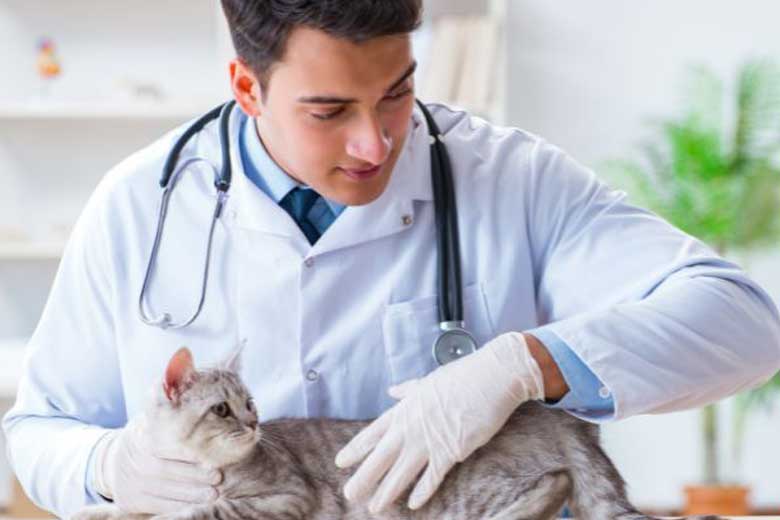Urinary tract infections (UTIs) are a relatively common health concern for cats, particularly in female cats and senior cats. They can cause discomfort and pain, and if left untreated, can lead to more severe conditions.
Urinary tract infections (UTIs) are a relatively common health concern for cats, particularly in female cats and senior cats. They can cause discomfort and pain, and if left untreated, can lead to more severe conditions.
As a cat owner, it’s essential to be able to recognize the signs and symptoms of UTIs, understand their causes, and take preventative measures to help ensure your cat’s urinary tract health. In this article, we’ll discuss the causes of UTIs in cats, the signs and symptoms to look out for, and steps you can take to prevent your cat from developing a UTI.
Signs your cat may have a UTI
Here are five signs that a cat may have a urinary tract infection (UTI).
Sign #1: Frequent urination
Cats with UTIs may urinate more frequently than usual, and they may only produce small amounts of urine.
Sign #2: Straining to urinate
UTIs can cause discomfort or pain during urination, causing cats to strain or cry while using the litter box.
Sign #3: Blood in urine
Blood in the urine is a common sign of UTIs in cats. The urine may appear pink, red, or brown.
Sign #4: Urinating outside the litter box
If a cat has a UTI, they may avoid using the litter box because they associate it with pain or discomfort.
Sign #5: Excessive licking
Cats with UTIs may excessively lick their genital area, indicating discomfort or irritation.
It is important to note that these symptoms can also be signs of other medical conditions, and a proper diagnosis by a veterinarian is crucial for effective treatment. If you suspect your cat may have a UTI, it is essential to take them to a veterinarian as soon as possible for proper diagnosis and treatment.
What you can do to help prevent cat UTIs
Let’s face it, urinary tract infections are common amongst cats but there are several things cat parents can do to help prevent their cat from getting one.
- Encourage hydration: make sure your cat has access to fresh, clean water at all times. Consider offering wet food or adding water to their dry food to encourage water consumption.
- Clean the litter box regularly: A dirty litter box can harbor bacteria and increase the risk of UTIs. Make sure to clean the litter box regularly, ideally daily, and provide enough litter boxes for your cat.
- Promote good hygiene: regular grooming and keeping the genital area clean can help prevent infections.
- Provide stress relief: stress can weaken a cat’s immune system and increase the risk of UTIs. Provide plenty of mental and physical stimulation, and create a calm and secure environment for your cat.
- Monitor diet: feeding your cat a balanced, high-quality diet can help prevent UTIs. Avoid diets high in magnesium and phosphorus, which can contribute to the formation of crystals and stones.
- Support urinary & kidney health: There are various herbal remedies that are safe to use and have been shown to improve bladder and urinary tract function like UTI support from Prana Pets.
- Regular veterinary check-ups: regular veterinary check-ups can help catch UTIs and other health problems early, allowing for prompt treatment.
By following these steps, you can help reduce your cat’s risk of developing a UTI and promote their overall urinary tract health.
More cat UTI questions
Are cats prone to UTIs?
Cats are prone to urinary tract infections (UTIs) due to their unique anatomy and physiology. Female cats are more susceptible to UTIs than males because their urethra is shorter and wider, making it easier for bacteria to travel up to the bladder. Male cats also have a narrower urethra, which can make it difficult for them to urinate and can lead to the formation of crystals and stones in the urinary tract, which can cause infections.
Other factors that can contribute to UTIs in cats include obesity, stress, a diet high in magnesium and phosphorus, and underlying medical conditions such as diabetes or kidney disease. It is important to note that UTIs in cats can be a serious condition and should be treated promptly by a veterinarian to prevent complications such as kidney damage or bladder obstruction.
My cat isn’t drinking water— should I be worried about a UTI?
If a cat is not drinking enough water, it can increase their risk of developing a urinary tract infection (UTI). When a cat does not drink enough water, their urine becomes more concentrated, which can make it easier for bacteria to grow in the bladder, leading to an infection.
Additionally, not drinking enough water can cause urine to become too acidic, leading to the formation of crystals and stones in the urinary tract, which can also cause infections. It is important to encourage cats to drink enough water to maintain their urinary tract health. Some tips to encourage cats to drink water include providing fresh water daily, using a clean water bowl, adding wet food to their diet, or using a pet water fountain.
If you suspect your cat may have a UTI, it is essential to take them to a veterinarian for proper diagnosis and treatment.
YOU MIGHT BE INTERESTED IN
Find the Perfect Ceramic Cat Fountain for Your Home and Your Cat
Best Stainless Steel Pet Fountains
Please note: this article has been provided only for informational purposes. If your cat is showing any signs of a disease, please contact your vet immediately.

